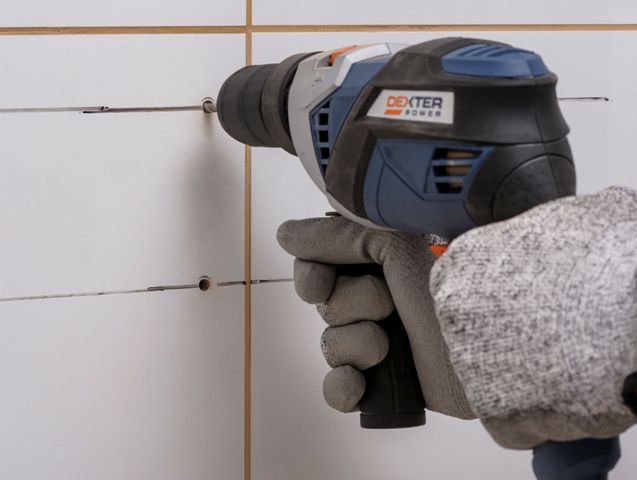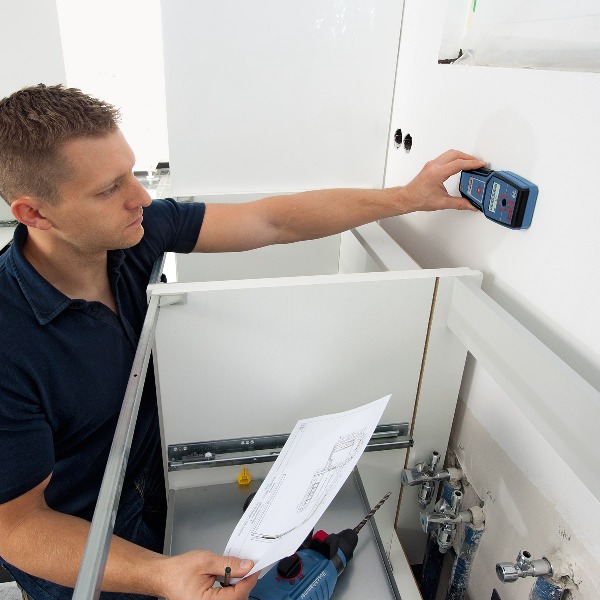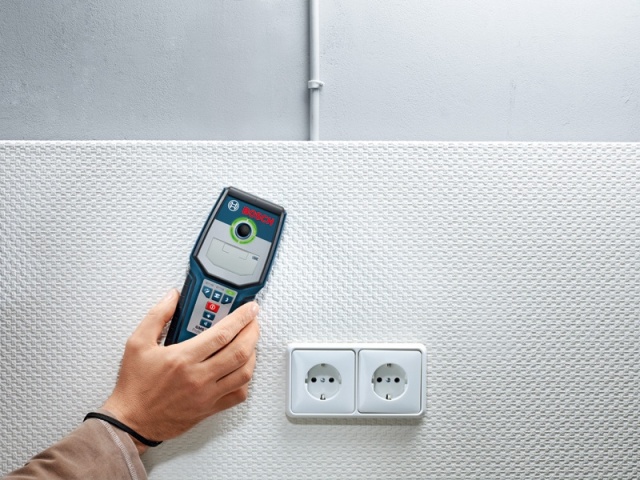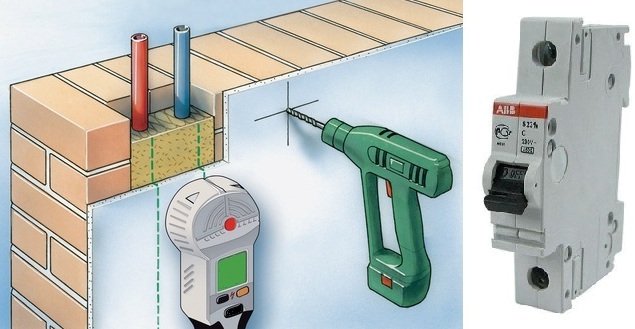Categories: Sharing experience, Electric installation work
Number of views: 17555
Comments on the article: 1
How not to get into the wire when drilling walls
Drilling walls and ceilings is a common thing for an electrician, installer, repairman. And a simple layman may occasionally have a need drill a hole in a wall or ceiling. And if there is a drill or a puncher at home, then you can do everything yourself, only by answering a question about how to avoid getting into hidden wiring.
If you get into the wiring with a drill or a drill, then in the most optimistic case you will break the cable, and you the sockets will stop working. With less success, a short circuit will occur through the tool, the circuit breaker will open at the entrance to the apartment, but again the wiring will have to be repaired. In the worst case, an electric shock or even a fire awaits a person. Therefore, when drilling, it is better not to get into the wiring. About how not to get into the wiring and will be discussed in our article.

Wall drilling
Suppose you decide to install a Swedish wall for a child, and fastening to the wall must be done with 10 in 100 anchor bolts. We prepared the tool, it’s up to the drill. Take a look at the wall under the ceiling. At a distance of at least 150 mm from the ceiling, a horizontal wire is usually laid inside the wall leading to the junction box, from which at least one wire inside the wall goes to the outlet.
The wire to the outlet from the junction box usually goes vertically downward, that is, at a right angle. Even if the junction box is not visible, it is rare when the wire is not routed vertically from the top of the outlet. Therefore, the first conclusion - do not drill right above the outlet!
The second option - the outlet is located on the partition, which does not reach the ceiling. Here, the wiring is most likely brought up to the outlet vertically from the bottom. So you can’t drill right under the socket!
Various options for laying wires in apartments and houses are considered here:
Typical layout of wiring in apartments
The principles of laying cable lines
Recommended placement of sockets and switches
How to make wiring in compliance with all rules and regulations

Flush Detector
If you are one of those people who like to frequently update the interior, for example: weighing pictures, installing hanging headsets, coming up with new places for bookshelves, then you need to either have a wiring diagram of your home, ideally - electrical wiring projector purchase a hidden wiring detector.
The hidden wiring detector is a portable battery-powered device the size of a flashlight, which, if necessary, will be enough to turn on and attach to the place on the wall where you plan to drill a hole. The device will immediately emit a sound or signal with a light indication if a wire passes here. So you will know exactly where you can’t drill.

The hidden wiring detector will allow you to quite accurately, with an error of several centimeters, detect wiring in the wall or in the ceiling. Here you will find review of modern hidden wiring detectors.
Ceiling Drilling
As for the ceiling, initially, even at the construction stage, inside the ceiling plate, the wire leads to the future chandelier. The wire runs perpendicular from the wall - to the place where the chandelier will hang, in panel houses, this is traditionally done.
If you do not know exactly which side the wire comes in (maybe from above, if it’s a monolith), you will need to use a hidden wiring detector, or partially open the ceiling surface near the output and see which side the wire goes. After that you can safely drill.
Security measures

In any case, for safety reasons, drill whenever possible with a voltage disconnected in the room.To do this, turn off the machine that is responsible for supplying electricity to the branch of the wiring that is at risk of being damaged. Connect a rotary hammer or drill through an extension cord in another room.
After drilling, turn on the machine, and if it does not immediately knock it out, then everything is in order, you did not damage the wiring. Be very careful when drilling holes in the absence of information about finding hidden wiring, because a short circuit can not only damage the wiring, it also poses a threat to your health.
See also on our website: How to find wiring in the wall and What to do if hidden cable is damaged
See also at i.electricianexp.com
:
